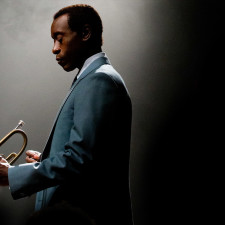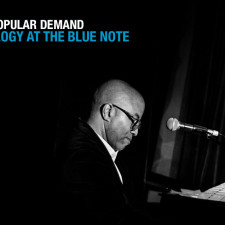Black Music Month Day #3
When bebop appeared seemingly out of nowhere in the mid 1940s, the general public heard it as something strange, something new. Sounding self-consciously “modern” to many, the creators of bebop crafted,
individually and collectively, a musical style that combined the dance impulse of earlier forms of jazz with fresh rhythmic, melodic, and harmonic innovations that turned the jazz world on its ear. Together with changes in the social standing of African Americans in the United States, bebop seemed to open up new avenues of expression for all black musicians across the board. The days of the “shucking and jiving Negro” bent on serving up what American audiences demanded—even if that meant engaging in the performance rhetoric of minstrelsy—seemed like a bad memory. Bebop musicians have come to symbolize for many the broader shifts that occurred in both the realm of entertainment and in the larger social world of the 1940s and beyond.
One central figure in this movement is pianist Earl “Bud” Powell (1924-66), a supremely gifted musician who came of age during the bebop era. Bud Powell’s reputation rests chiefly on his soloing ability, although he also composed memorable original works, known for their delicate intricacy, idiosyncratic style, and intense, emotional thrust. He was a virtuoso titan, an expert improviser, and a hero to jazz pianists active during the mid-1940s and beyond.

Before there were Timberlands, Adidas, and Rocawear, the revolution sported a Zoot suit, beret, and goatee
Powell’s contributions overshadowed Al Haig, George Wallington, and Dodo Marmarosa, all fine pianists in bebop’s inner circle. Pianists Lennie Tristano and Thelonious Monk , who built parallel careers to Powell, crafted bebop voices that rivaled his originality but not his reputation as a bebop improviser. The next generation of pianists such as Tommy Flanagan, Red Garland, Wynton Kelly, and Horace Silver, among many others, learned Powell’s devices well. Because of his influence and the respect in which he was held, Blue Note record company producers dubbed him “the Amazing Bud Powell,” a title that has endured through the years.
Listen to him in live performance when he lived in Europe between 1959-64. Killing it.
Tags: Bebop, Bud Powell, Jazz


 Share On Facebook
Share On Facebook Tweet It
Tweet It







![[Philly EVENT] Screening of Amazing: A Film about Bud Powell](https://musiqology.com/blog/wp-content/uploads/2015/03/bud-powell-225x225.jpg)




